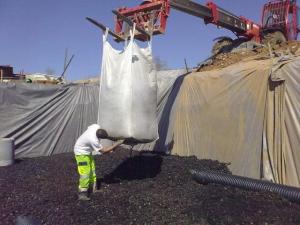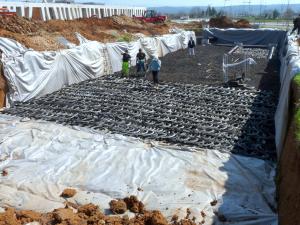New use for old tires
Every year, several hundred thousand tons of used tires are discarded. Most end up in landfills—only a fraction is granted a second life as re-treads, filler-material, "crumb rubber" for asphalt, fuel, artificial reefs or ... flower pots.
Hilios, a small family business in Beaucaire, a village north of Arles, has devised and patented a process that transforms used tires into pellets. Ten to twenty-five millimetres thick and the size of a two euro coin, the tire pellets are used as filler material for underground storm basins.
This brand new technique was recently adopted for the creation of two large storm basins at the International School in Manosque. "A volume filled with tire pellets," explains Dimitri Papacristou, the inventor of the process, "has a much higher retention capacity than one that is filled with stone pebbles, as storms basins habitually are."
Tire pellets are also four times lighter than pebbles, thus requiring considerably fewer truck rotations to fill the basins. The advantages of the technique developed by Mr. Papacristou do not stop there. "Compared to pebbles," he explains, "tire pellets offer better resistance to rolling—you could build a highway above these storm basins!"
Fortunately, no highway will be built over the International School storm basins. The area over one will be developed as a sports field, and over the other as a "green area."



